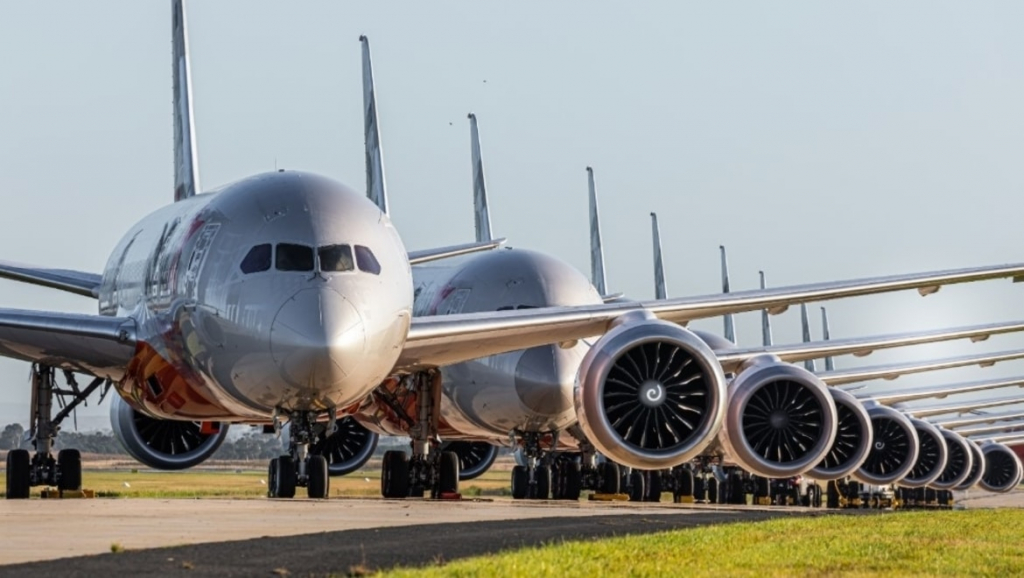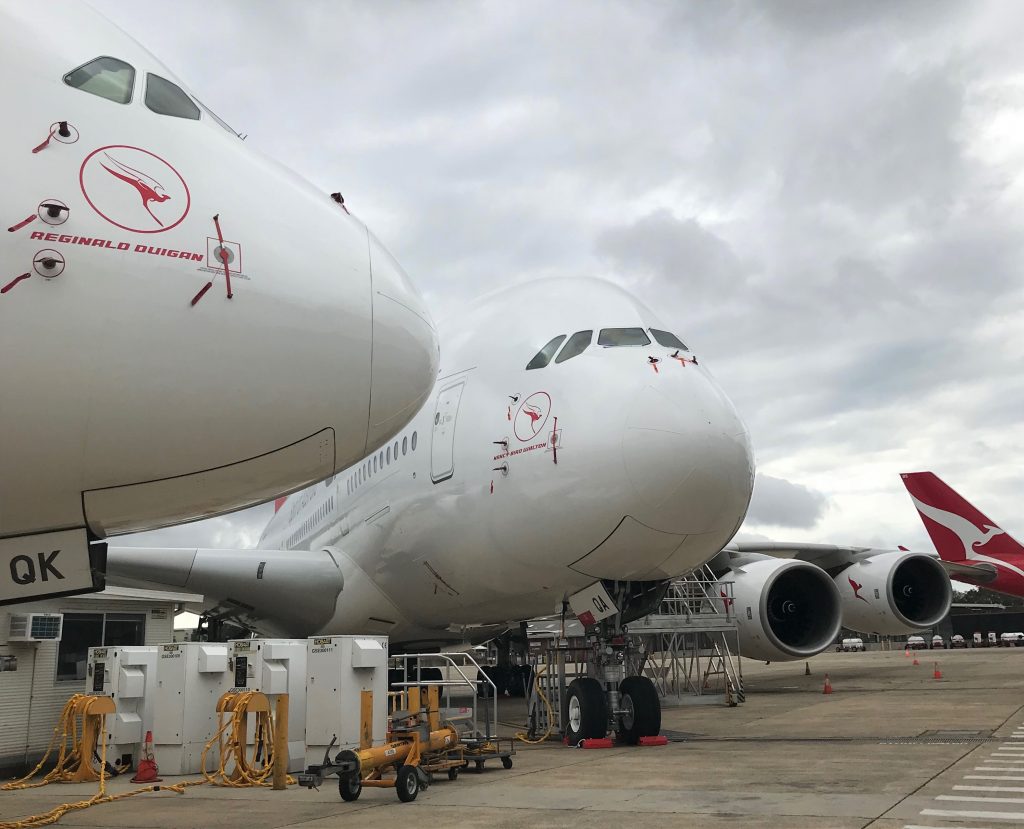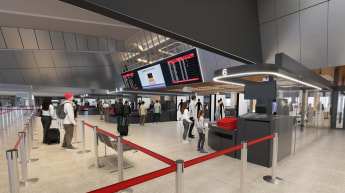
Qantas has nearly 300 aircraft across its fleet, but the majority are now grounded due to the coronavirus crisis. Here, the airline explains what it’s doing to keep them active and ready to fly again.
The phrase ‘long-term parking’ at airports usually refers to your car. But at the moment, as airlines around the world go into some form of hibernation during the coronavirus crisis, it’s the aircraft looking for somewhere to sit for a while.
Parking a plane isn’t a simple as locking up your car and walking away. There’s a lot we need to do before these aircraft enter hibernation.
According to John Walker, head of maintenance at Qantas, all aircraft are given some TLC before being put to bed. And even while they’re asleep there’s a lot of work to do.
Firstly, a team of cleaners give the interior an extensive “deep clean” that involves using high grade disinfectant to wipe down surfaces including inflight entertainment screens, arm rests, tray tables as well as giving the carpets a good hoover. The outside gets a good wash as well.
Next are the tyres.
All aircraft from the 737 to the wide-bodied A380s need to have their wheels rotated every seven to 14 days while parked, either by being towed around the tarmac or by using a jack to hoist them in the air to spin the wheels.
This helps having to replace the tyres due to “flat spots”. Hydraulic fluid is put on to the landing gear to protect it from rust.
The engines require specialised care as well. Consider that one A380 engine is worth about US$25 million – so maintaining them is critical.
To keep the inside of the engine moisture-free, giant versions of the silica moisture absorption sachets are inserted.
One A380 requires over a hundred kilograms of these moisture absorbers to maintain humidity levels in the cabin and engines.
The engines also need to be fired up every seven or 14 days. The rest of the time, a cover is put on the engine cowling to protect it from dust and insects.

All external holes on the fuselage such as the pitot and static sensors, need to be covered to avoid insects crawling inside and then calling these critical flight sensors “home”.
Birds also can mistake the APU (Auxiliary Power Unit) exhaust outlet at the end of the jet aircraft for an ideal nesting nook, so engineers also plug those.
All up there’s more than 200 Qantas Group aircraft, including Jetstar’s fleet of Boeing 787 Dreamliners, parked at our major airports around the country.
Engineers from Qantas and Jetstar are quietly tending to these sleeping beauties, and we’re all looking forward to the day when they can welcome passengers back on board and take to the skies again.
Thanks to Avalon Airport and Chung Chieh Choo, senior operations controller Jetstar, for the amazing pics. And check out the video showing what the team need to do before putting these planes to bed.
















Steve
says:Plenty of room at Port Macquarie or COFFS, Tamworth airports as well to temporarily store a 737/A319/320/330 etc . Probably not viable or practical, but could be easily done if needed.
james
says:Does Qantas/Virgin et al rotate aircraft, ie. have a few actually flying one week & then different ones the following week & so on ?
AlanH
says:Coastal airports are not desirable due to the high humidity and salt corrosion. Wagga Wagga or Dubbo would be preferable.